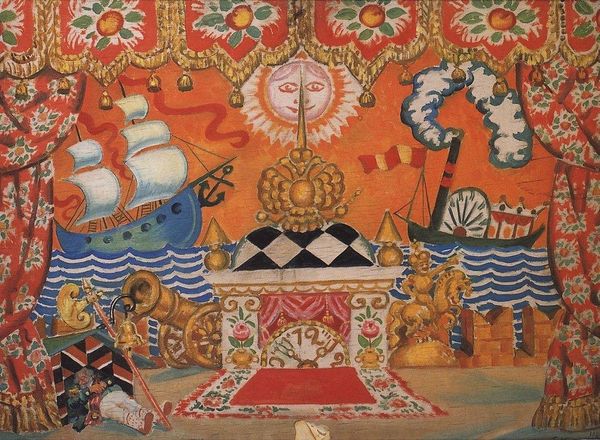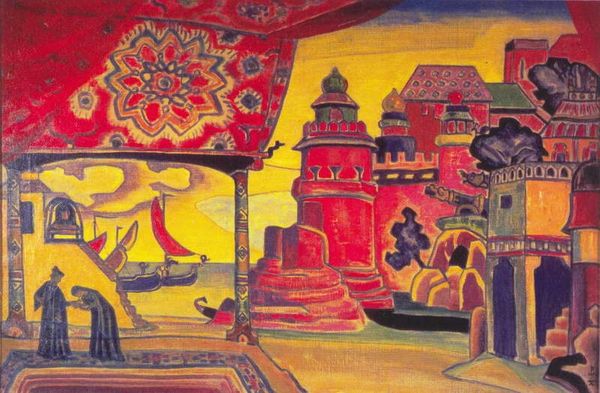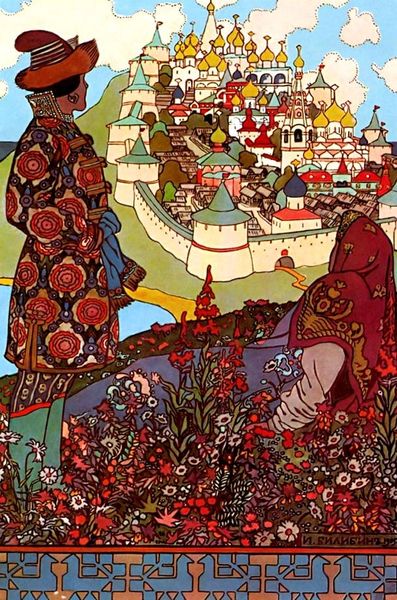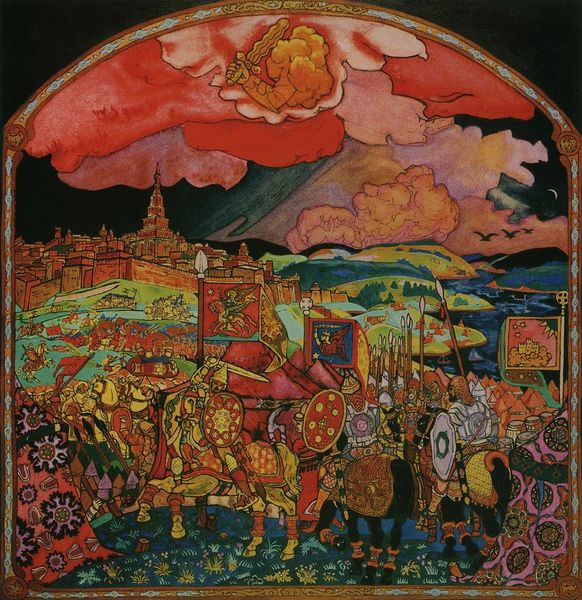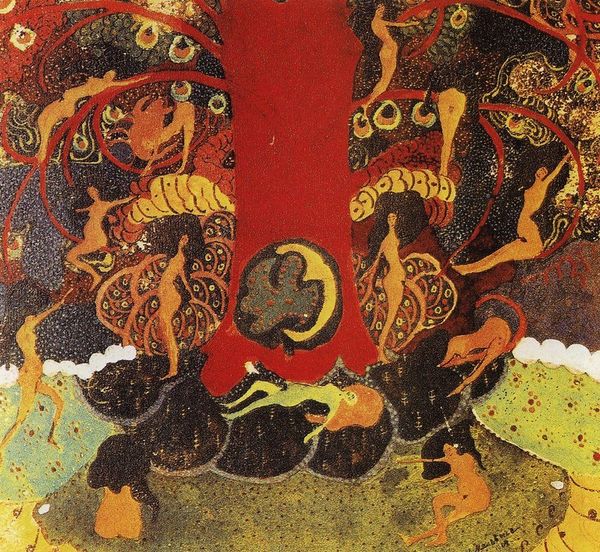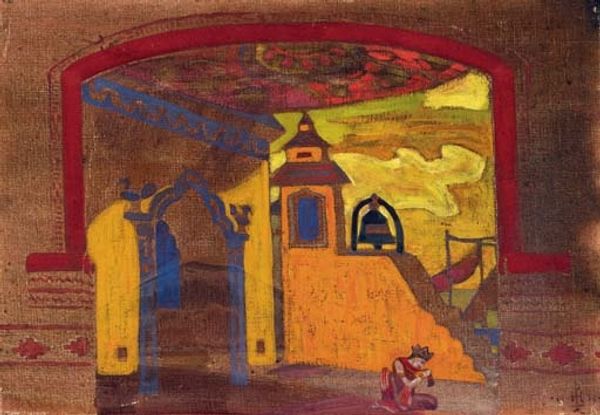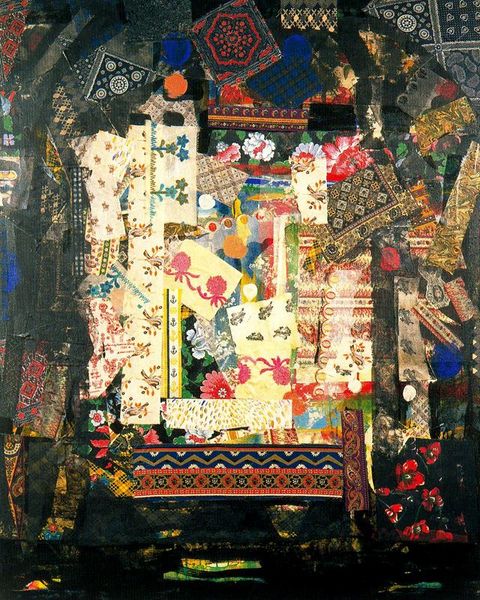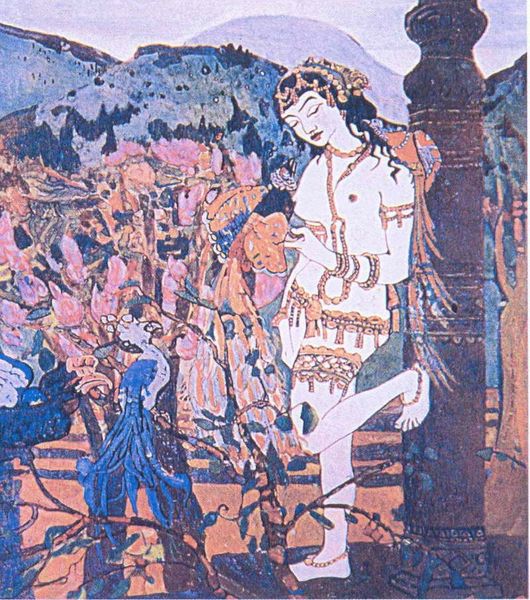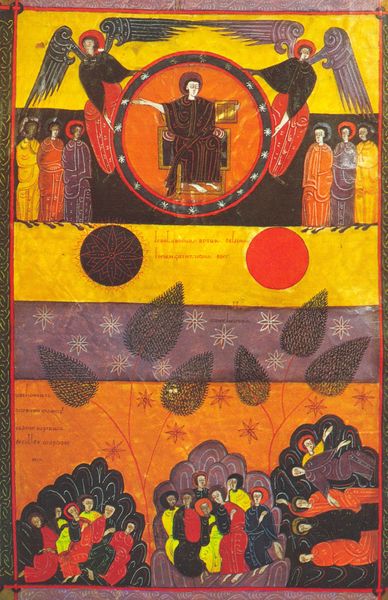
tempera, painting, mural
#
portrait
#
medieval
#
narrative-art
#
tempera
#
painting
#
book
#
landscape
#
mural art
#
naive art
#
christianity
#
mythology
#
symbolism
#
russian-avant-garde
#
history-painting
#
mural
#
christ
Copyright: Public domain
Editor: This tempera painting, “Book of Doves,” was created in 1911 by Nicholas Roerich. I’m struck by the composition. It feels both medieval and…otherworldly. The five figures surrounding the book almost look like they're enacting a sacred ritual. What are your initial thoughts on this piece? Curator: It is certainly a captivating work. Considering Roerich's deep interest in symbolism and history, specifically Russian and Eastern European folklore, I view this painting through the lens of cultural and religious revivalism prevalent at the turn of the century. Notice how he uses the visual language of icons. Does that influence how you read it? Editor: Yes, the flatness of the figures and the golden hues give it a distinctly Byzantine feel. So you think the painting is drawing upon the tradition of icon painting? Curator: Precisely. And icons served a public function, they were not mere decoration. How might that public function influence Roerich's choices in "Book of Doves"? Look closely, how does he stage these wise figures? The open book dominates everything, right? This emphasizes its importance and makes you, the viewer, a participant in witnessing the passing of crucial knowledge. Think also of the socio-political context of the Russian avant-garde, how might Roerich's turn towards historical narratives be seen as either a rejection of or an engagement with the future? Editor: It's interesting to consider his choices in relation to the artistic movements happening at the time. I guess I hadn’t really considered how the social and political environment shaped what he chose to depict. Curator: Indeed. Understanding the complex interplay between art, history, and societal shifts enhances our ability to decipher an artwork’s meaning and intent. So Roerich isn’t just painting a scene; he’s participating in a dialogue about Russia's past and future. Editor: This was very informative. I'll definitely think about the cultural context more when looking at artworks. Curator: And I, of course, am reminded that understanding context is about raising the right questions and staying open to many possibilities.
Comments
No comments
Be the first to comment and join the conversation on the ultimate creative platform.
